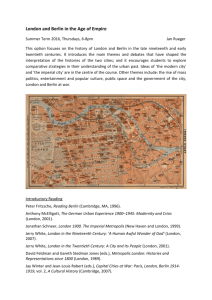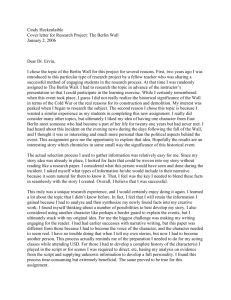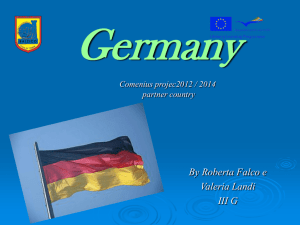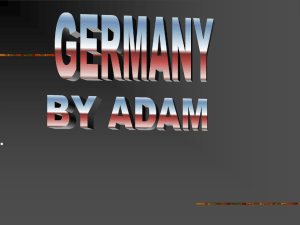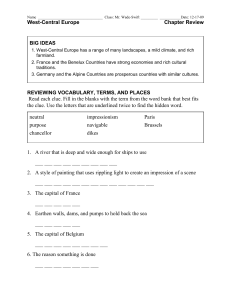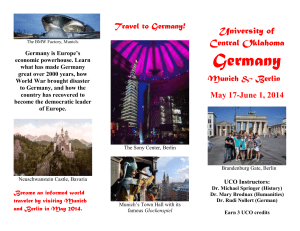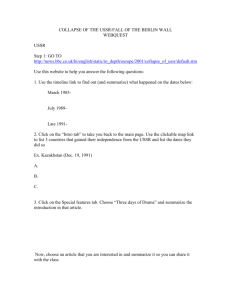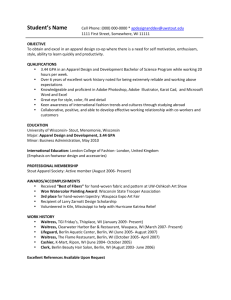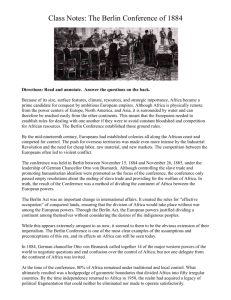Berlin Presentation Mia
advertisement
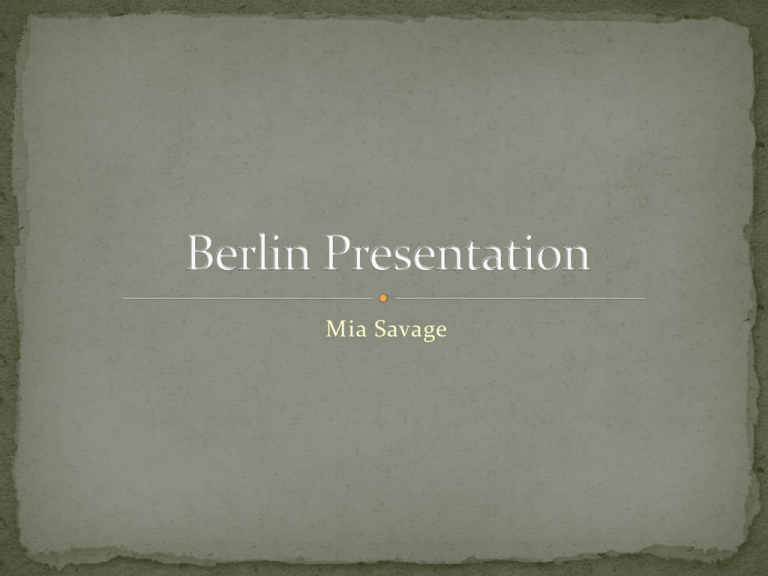
Mia Savage First of all we will go to Brandenburg Gate. It is one of Berlin’s most important monuments. It is a landmark and symbol all in one with over two hundred years of history. A former symbol of the divided city, it drew visitors who used to climb an observation platform in order to get a glimpse of the world behind the Iron Curtain. On the other side of the barren “death-strip” separated East from West Berlin, geographically and politically. It was here that on June 12, 1987, Ronald Regan issued his stern command to his cold war adversary admonishing him with the words: tear down this wall! It was officially opened to traffic on December 22, 1989 and 100,000 people came to celebrate the occasion. Unfortunately this also resulted in severe damage to the monument which needed to be restored and was only officially reopened on October 3, 2002. Next we will go to the Berlin wall. It was made on August 13th 1961.They built the wall as a way of separating the three zones controlled by France, Britain and America from the zone controlled by the Soviet Union. People attempting to get from East to West were regarded as traitors and guards were instructed to shoot at them if they attempted to cross, although not to kill them! Lots of people scored it four and a half out of five when they asked 75 people how it was. The site was designed by Alfred Messel and was constructed in twenty years, from 1910 to 1930. The museum is visited by approximately 1,135,000 people every year, making it the most visited art museum in Germany (2007). It is a museum displaying Islamic art! The Berliner Dom (Berlin Cathedral), completed in 1905, is Berlin’s largest and most important Protestant church as well as the sepulchre of the Prussian Hohenzollern dynasty. This outstanding high-renaissance baroque monument has linked the Hohenzollerns to German Protestantism for centuries and undergone renewed phases of architectural renovation since the Middle Ages. First built in 1465 as a parish church on the Spree River it was only finally completed in 1905 under the last German Kaiser -Wilhelm II. Damaged during the Second World War it remained closed during the GDR years and reopened after restoration in 1993 Finally, we will go to Berlin’s most famous trademark department store, KaDeWe (Kaufhaus des Westens) – or department store of the West. It is Berlin’s shopping paradise, a favourite, easy to spot landmark on Wittenberg Platz. With 60,000sqm, the equivalent of nine football fields it has 40,000 visitors a day, this is the legendary, largest department store on the continent. The KaDeWe has survived the turmoil of 20th century German history unscathed. Beginning its commercial life in 1907, the store was a constant Berlin presence, its highs and lows reflecting those of the city.


